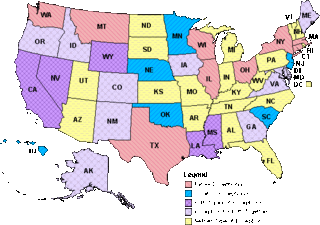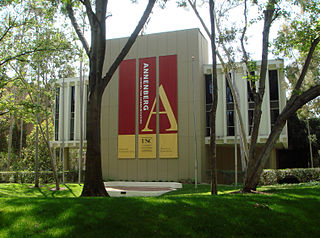
Mothers Against Drunk Driving (MADD) is a non-profit organization in the United States, Canada and Brazil that seeks to stop drunk driving, support those affected by drunk driving, prevent underage drinking, and strive for stricter impaired driving policy, whether that impairment is caused by alcohol or any other drug. The Irving, Texas-based organization was founded on September 5, 1980, in California by Candace Lightner after her 13-year-old daughter, Cari, was killed by a drunk driver. There is at least one MADD office in every state of the United States and at least one in each province of Canada. These offices offer victim services and many resources involving alcohol safety. MADD has claimed that drunk driving has been reduced by half since its founding.

The Harvard T.H. Chan School of Public Health is the public health school of Harvard University, located in the Longwood Medical Area of Boston, Massachusetts. The school grew out of the Harvard-MIT School for Health Officers, the nation's first graduate training program in population health, which was founded in 1913 and then became the Harvard School of Public Health in 1922.
Behavior change, in context of public health, refers to efforts put in place to change people's personal habits and attitudes, to prevent disease. Behavior change in public health can take place at several levels and is known as social and behavior change (SBC). More and more, efforts focus on prevention of disease to save healthcare care costs. This is particularly important in low and middle income countries, where supply side health interventions have come under increased scrutiny because of the cost.

The terms "designated driver" and "designated driving" refer to the selection of a person who remains sober as the responsible driver of a vehicle whilst others have been allowed to drink alcoholic beverages.
Social marketing is a marketing approach which focuses on influencing behavior with the primary goal of achieving "common good." It utilizes the elements of commercial marketing and applies them to social concepts. However, to see social marketing as only the use of standard commercial marketing practices to achieve non-commercial goals is an oversimplified view. Social marketing has existed for some time, but has only started becoming a common term in recent decades. It was originally done using newspapers and billboards and has adapted to the modern world in many of the same ways commercial marketing has. The most common use of social marketing in today's society is through social media.

Alcohol advertising is the promotion of alcoholic beverages by alcohol producers through a variety of media. Along with nicotine advertising, alcohol advertising is one of the most highly regulated forms of marketing. Some or all forms of alcohol advertising are banned in some countries. There have been some important studies about alcohol advertising published, such as J.P. Nelson's in 2000.
Children's culture includes children's cultural artifacts, children's media and literature, and the myths and discourses spun around the notion of childhood. Children's culture has been studied within academia in cultural studies, media studies, and literature departments. The interdisciplinary focus of childhood studies could also be considered in the paradigm of social theory concerning the study of children's culture.
The social norms approach, or social norms marketing, is an environmental strategy gaining ground in health campaigns. While conducting research in the mid-1980s, two researchers, H.W. Perkins and A.D. Berkowitz, reported that students at a small U.S. college held exaggerated beliefs about the normal frequency and consumption habits of other students with regard to alcohol. These inflated perceptions have been found in many educational institutions, with varying populations and locations. Despite the fact that college drinking is at elevated levels, the perceived amount almost always exceeds actual behavior. The social norms approach has shown signs of countering misperceptions, however research on changes in behavior resulting from changed perceptions varies between mixed to conclusively nonexistent.
Alcohol education is the practice of disseminating information about the effects of alcohol on health, as well as society and the family unit. It was introduced into the public schools by temperance organizations such as the Woman's Christian Temperance Union in the late 19th century. Initially, alcohol education focused on how the consumption of alcoholic beverages affected society, as well as the family unit. In the 1930s, this came to also incorporate education pertaining to alcohol's effects on health. For example, even light and moderate alcohol consumption increases cancer risk in individuals. Organizations such as the National Institute on Alcohol Abuse and Alcoholism in the United States were founded to promulgate alcohol education alongside those of the temperance movement, such as the American Council on Alcohol Problems.

Alcohol consumption by youth in the United States of America, also known as underage drinking, is an umbrella term for alcohol consumption by individuals under the age of 18 in the country.

The USC Annenberg School for Communication and Journalism comprises a School of Communication and a School of Journalism at the University of Southern California (USC). Starting July 2017, the school's Dean is Willow Bay, succeeding Ernest J. Wilson III. The graduate program in Communications is consistently ranked first according to the QS World University Rankings.

Bonnie Hammer is an American network and studio executive. As of 2020, her title is vice-chairman, NBCUniversal.
The Center for Media and Public Affairs (CMPA) is a self-described nonpartisan and nonprofit research and educational organization that is affiliated with George Mason University in Fairfax, Virginia. It was founded in 1985 by political scientists S. Robert Lichter and his ex-wife Linda Lichter. It published a newsletter called Media Monitor from 1987 to 2010.
The American Sexual Health Association (ASHA), formally known as the American Social Hygiene Association and the American Social Health Association, is an American nonprofit organization established in 1914, that cites a mission to improve the health of individuals, families, and communities, with an emphasis on sexual health, as well as a focus on preventing sexually transmitted infections and their harmful consequences. ASHA uses tools such as education, communication, advocacy and policy analysis activities with the intent to heighten public, patient, provider, policymaker and media awareness of STI prevention, screening, diagnosis and treatment strategies.

Substance abuse prevention, also known as drug abuse prevention, is a process that attempts to prevent the onset of substance use or limit the development of problems associated with using psychoactive substances. Prevention efforts may focus on the individual or their surroundings. A concept that is known as "environmental prevention" focuses on changing community conditions or policies so that the availability of substances is reduced as well as the demand. Individual Substance Abuse Prevention, also known as drug abuse prevention involves numerous different sessions depending on the individual to help cease or reduce the use of substances. The time period to help a specific individual can vary based upon many aspects of an individual. The type of Prevention efforts should be based upon the individual's necessities which can also vary. Substance use prevention efforts typically focus on minors and young adults – especially between 12–35 years of age. Substances typically targeted by preventive efforts include alcohol, tobacco, marijuana, inhalants, coke, methamphetamine, steroids, club drugs, and opioids. Community advocacy against substance use is imperative due to the significant increase in opioid overdoses in the United States alone. It has been estimated that about one hundred and thirty individuals continue to lose their lives daily due to opioid overdoses alone.
Jackson T. Katz is an American educator, filmmaker, and author. He has created a gender violence prevention and education program entitled 'Mentors in Violence Prevention', which is used by U.S. military and various sporting organizations.
Health communication is the study and practice of communicating promotional health information, such as in public health campaigns, health education, and between doctor and patient. The purpose of disseminating health information is to influence personal health choices by improving health literacy. Health communication is a unique niche in healthcare that allows professionals to use communication strategies to inform and influence decisions and actions of the public to improve health.
Stuart N. Brotman is an American government policymaker; university professor; management consultant; lawyer; author and editorial adviser; and non-profit organization executive. He has taught students from 42 countries in six separate disciplines — Communications, Journalism, Business, Law, International Relations and Public Policy. He also has advised private and public sector clients in more than 30 countries in five continents.
The Center on Media and Child Health (CMCH) is a non-profit organization based at Boston Children's Hospital. CMCH was founded in 2002, by Michael Rich, pediatrician; Associate Professor of Pediatrics at Harvard Medical School; and Associate Professor of Society, Human Development, and Health at Harvard T.H. Chan School of Public Health.








